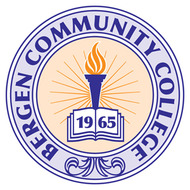
(View Complete Item Description)
Topic 3: BiopsychologyTextbook readings: p. 73; p. 76; pp. 80-101.Watch: The Mind - Series Homepage Produced by Colorado State University. 1999, all descriptions are from series website.Unraveling the Mysteries of the Mind (module 1) - Explores such fundamental questions as "What is the mind?" and "What is the relationship between the mind and the brain?" Summarizes various views on the brain/mind connection. Endorphins: The Brain's Natural Morphine (module 5) - Provides diagrammatic action graphics of neural networks, synaptic junctions, and neurotransmitter sites. Also touches on topics of consciousness, drug addiction, withdrawal symptoms, and nerve functioning.The Frontal Lobes: Cognition and Awareness (module 7) - Explains the importance of the frontal lobe in human functioning, and covers brain function, diagnostic assessment, cognitive function, evolution, and comparative behavior.Watch: The Brain - Series Homepage Produced by Colorado State University. 1997, all descriptions are from series website.Organization and Evaluation of Brain Function (program 1) - This module introduces the general external topography of the brain. To illustrate the relationship between specific behaviors and brain function, the module begins by showing a racecar driver exercising his skill, and then presents graphic illustrations of the internal activity of his brain. The module reviews several methods of studying brain activity including the CAT scan, PET scan, EEG, and MRI.The Divided Brain (program 5) - This module begins with graphic representations of the cerebral hemispheres' specialized functions. It continues with a description of the brain's asymmetry, showing diagrams of how the two halves communicate. The extreme case of a patient who has undergone split-brain surgery for treatment of epilepsy illustrates the role of hemispheric organization in sensory perception and verbal skills.Learning objectives:1. Neurons are the basic cell of the “nervous system”. Identify the basic parts of the neuron, and explain how neurons communicate with one another.2. Define neurotransmitters and describe how some neurotransmitters (specifically, acetylcholine, dopamine, GABA, norepinephrine and serotonin) affect behavior.3. State the difference between the central and peripheral nervous system.4. Explain the functions of the spinal cord, and of the right and left hemispheres of the cerebral cortex (outermost layer of the brain).5. Label the 4 lobes of cerebral cortex and identify the function(s) of each lobe.6. Explain why the brain’s limbic system (which includes the structures hippocampus, amygdala, and hypothalamus) is important.7. Describe how these methods provide images of the brain: CT scan, PET scan, MRI, and EEG.8. Explain how hormones of the endocrine system affect the body.
Material Type:
Module
Author:
Annemarie Roscello




















